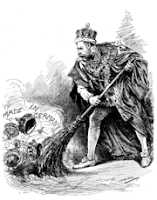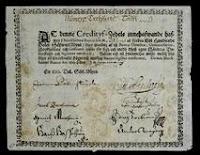While this legislation criminalised the sale of new slaves, it did nothing for existing slaves. The existing slaves had not been forgotten by the abolitionists who stepped up their campaigning during the 1820s for a complete ban. In 1823, the veteran abolitionists William Wilberforce and Thomas Clarkson founded the Society for the Mitigation and Gradual Abolition of Slavery Throughout the British Dominions. This organisation, particularly its younger more radical members, travelled around the country drumming up support to pressure the government to enact legislation to outlaw the ownership of slaves.
Ten years after its foundation, the society achieved its aim, albeit with some compromises. On 28th August 1833, King William IV gave royal ascent to An Act for the Abolition of Slavery throughout the British Colonies; for promoting the Industry of the manumitted Slaves; and for compensating the Persons hitherto entitled to the Services of such Slaves. By terms of this act slavery would be banned in all dominions of the British Empire (except in territories of the east India Company, and the islands of Ceylon and Saint Helena).
The Act came into effect on 1st August 1834, when all remaining slaves within most of the British Empire were effectively emancipated. Nevertheless, they were still not fully free as all slaves had to continue working for their former owners as 'apprentices', with the period of indentured servitude lasting between four and six years depending on their classification. The Act also provided for twenty million pounds to be used to compensate slave owners.
Peter Davis' excellent HMS Surprise website has many historical sources about the Royal Navy, including the full text of the 1833 Act along with other British legislation pertaining to slavery.
Related posts
Constitution of Vermont abolished slavery: 7th July 1777
Josiah Henson born: 15th June 1789
Haitian Revolution: 22nd August 1791
French Abolished Slavery for Second Time: 28th April 1848
















